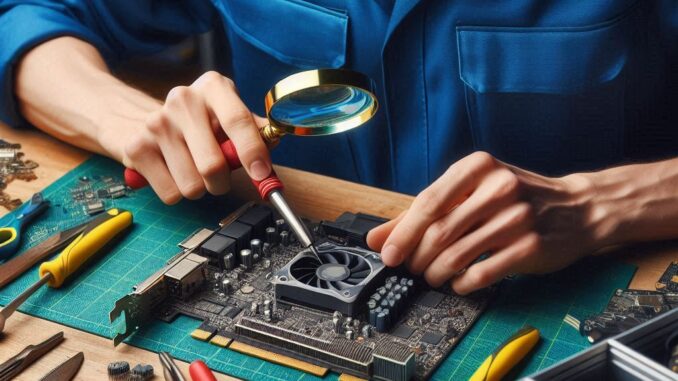
In the ever-evolving world of gaming, building a custom PC is a milestone for many enthusiasts. The thrill of selecting each component and assembling a powerhouse machine is unmatched. However, the experience can quickly turn sour when things go wrong, as highlighted in a recent discussion on r/PakGamers.
The Situation
A user, FimoonYolo, recently shared a troubling experience after building a custom PC for 70k, featuring an RX 590 GME graphics card. Within just a month, the graphics card stopped displaying video output when connected via HDMI, while the motherboard's integrated graphics continued to function. The user returned to the seller, but to their dismay, the warranty was not honored, as it had expired after 15 days. The seller declared the card dead and unrepairable, leaving the user questioning the cause of the failure.
Possible Causes of Graphics Card Failure
Graphics card failures can be attributed to a variety of factors, ranging from manufacturing defects to improper handling or installation. However, in this particular case, the discussion within the community suggested a common issue: mined graphics cards.
1. Mined Graphics Cards:
One user, Any-Drawing6955, pointed out that the graphics card might have been used for cryptocurrency mining before being sold. Mining operations often push GPUs to their limits, running them 24/7 at high temperatures and stress levels. This intense usage can drastically reduce the lifespan of a graphics card, leading to early failures like the one experienced by FimoonYolo.
2. Power Supply Issues:
Another potential cause could be power supply inconsistencies. If the power supply unit (PSU) is not delivering consistent power, it can lead to component failures, especially in power-hungry parts like the GPU. However, this seems less likely given the scenario described.
3. Overheating:
While FimoonYolo did not report any signs of overheating, it is still a common cause of GPU failure. Proper ventilation and cooling are crucial for maintaining the health of a graphics card, especially during intense gaming sessions.
Lessons Learned
For those in the process of building a custom PC, this case highlights the importance of several key practices:
- Research Your Components: Always buy components from reputable sellers and brands. If possible, avoid second-hand GPUs, especially those that may have been used for mining.
- Understand Warranties: Be aware of the warranty terms before purchasing any component. Some sellers offer limited warranties that may not cover you in the event of a failure.
- Test Your Build Thoroughly: After assembling your PC, conduct stress tests to ensure that all components are functioning correctly. This can help identify any issues early on.
- Consider Aftermarket Cooling Solutions: If you plan on pushing your GPU to its limits, investing in additional cooling solutions may prolong its lifespan.
Conclusion
Building a custom PC is an exciting endeavor, but it comes with its own set of challenges. The experience shared by FimoonYolo on r/PakGamers serves as a reminder to proceed with caution and to be prepared for the unexpected. By doing your research, understanding warranties, and ensuring proper cooling, you can help safeguard your investment and enjoy a smoother gaming experience.
For more tips on building custom PCs, troubleshooting hardware issues, and navigating the gaming world, check out PakGamersHub.com, a project by Asad Khalil, where you can find comprehensive guides and expert advice tailored to the needs of the gaming community.
Leave a Reply